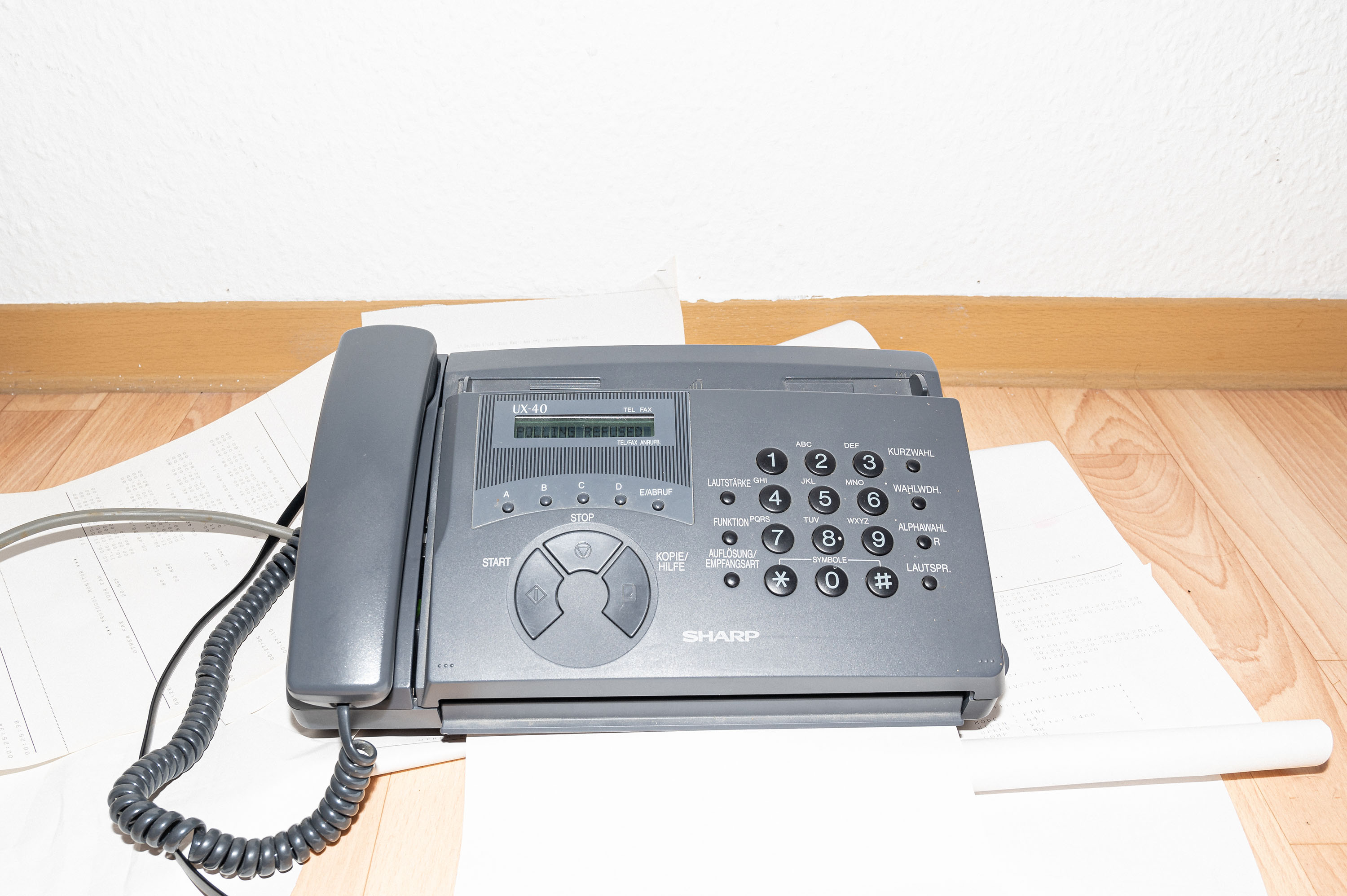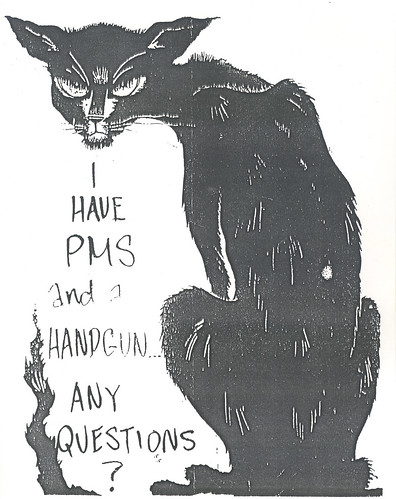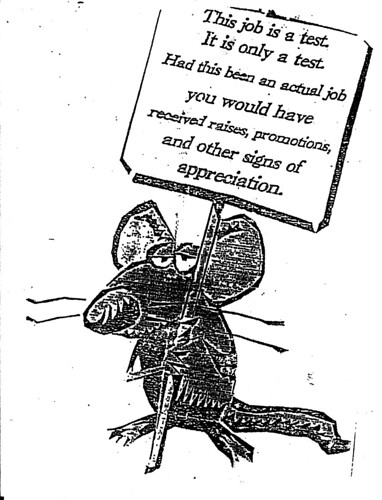The fax machine revisited

The fax machine should have become obsolete years ago, having been overtaken by the Internet, PDF files, Google Docs, and email,[1] but a recent study has demonstrated its resilience: 82% of German companies still use fax machines, and 33% use them often or very often.[2] In the U.S., the fax is still widely used in the healthcare and legal sectors.[3]
The invention of the fax was sandwiched between two other major communications inventions, the telegraph and digital technology. For most of its history, the fax was too expensive for office or home use. When it became affordable and available in the early 1980s, digital technology was just around the corner.[4] Fax usage exploded in the 80s and 90s. In the United States, the number of fax machines grew from 250,000 in 1980 to 5 million in 1990[5]. In Germany, there were 4,367 fax lines in 1981 and 1,100,000 in 1993.[6]
Though it is often derided today, the fax machine was the engine that led to today's globalized, on-demand economy. "Faxing accelerated the work cycle from weeks or days to hours or minutes. The need-for-speed mindset wholeheartedly embraced facsimile, whose immediacy gave a 'hot off the wire' urgency lacking in a letter or telex … Faxing blurred if not destroyed the distinction between work and everything else. For workaholics, fax machines enabled them to take their work anywhere. For everyone, deadlines never ended."[7]
Today, thermal printers are only used for fast, low-volume jobs like shipping labels or receipts.[8] In fax machines, they were the transitional technology between electrostatic paper and plain paper models. Starting in the late 90s, only very inexpensive models used thermal printers as laser and inkjet printers became available at affordable prices.[9]
As soon as fax machines arrived in offices, employees began to subvert their intended use. Instead of faxing documents between workers or offices, people started sending jokes, cartoons, or other non-work-related content to their coworkers. The fax machine became a canvas for collective creativity, blurring the lines between the mundane and the artistic.
This repurposing laid the groundwork for early networked communities, foreshadowing the meme culture that defines the Internet today.[10] Faxlore, a fax-based form of folklore, heralded a shift in content formatting due to the predominately visual medium of the fax. In his essay “Traditional Humor from the Fax Machine: ‘All of a Kind’”, Michael J. Preston writes: "What is striking when browsing through FAXES [a collection of faxlore] is the percentage of largely visual items; of fifty-eight, just five are faxed or photocopied typescripts or typeset items, unlike the practice before the general availability of the photocopier … .”[11] This transformation attests to the fax machine's role in shaping a more visually oriented culture.

Example of faxlore images.[12]

Example of faxlore images.[12:1]
Fax technology contributed to visual culture as early as the 1930s. Photographs of events from around the globe were sent via fax at a speed unmatched by earlier methods like plane or train. This allowed newspapers to print articles the next day featuring real pictures of disasters far away. Photojournalism was thus able to grow as a profession thanks to the speed of the fax.[13]
Nowadays, the transfer of documents and user-generated content has more or less moved to the digital sphere. The fax enabled an increase in the scale and the speed of communication, while the Internet has multiplied it exponentially. As computers have gotten faster, so have expectations. User interfaces are expected to respond in less than 400 milliseconds or they are perceived as non-functional,[14] and TikTok users get stressed when videos are longer than 60 seconds.[15]
In our project, we use the fax machine as a mere printing device equipped with a thermal printer. By bottlenecking the fast thermal printer with the fax machine’s 9.6 kb/s modem, the printing process is decelerated and the fax is deprived of its purpose. It's neither practical nor fast, transforming it into a purely aesthetic tool.
Interacting with a 30-year-old device makes the impact of technology on humans quite tangible. Why do we find slowness so unbearable? The fax machine represents not only a change in technology but also shows how technology influences humans. This is also evident in our preference for visual content, which can be seen as a result of the immediacy of image transmission that began with fax technology. However, the speed of the fax can no longer meet the expectations set by today's social media images.
Process
To get the fax machine to print images, we first tried to connect it directly to the thermal print head. Using the service manual, we located the pins for the SPI connection and our plan was to analyze the data sent in order to emulate it with an ESP32. Since we're total amateurs in the field of device hacking, we ran into a lot of problems trying to read the data sent by the fax.

Through discussions with Denis and Alex, we came to the conclusion that it might not be necessary to connect the devices in this way, and that the slow internal fax modem might be an interesting addition to the printing process. Thus, the next step was to try to simulate a phone line from a computer to the fax machine via an external modem. This was much easier, since only a resistor and a battery had to be soldered to the telephone cable.[16] However, there were problems sending data to the fax machine, although receiving faxes from it worked fine. In the end, we decided to let a Fritz!Box do the magic for us and just call the fax machine using the Fritz!Box. We used an USRobotics USR5637 modem, plugged the PC into jack 1 on the Fritz!Box and plugged the fax machine into jack 2. To send data to the fax machine, we used the Windows Fax and Scan App and dialed the number **2, which is the internal number to the second phone line. We used the Windows default driver for a 9600 bit/s modem, not the driver from USRobotics, which did not seem to work. When the fax modem was connected, it was also possible to select Fax from Window’s print menu, which allows users to send files to the fax as attachments that can be used on our local line.
Method
The installation consists of a Sharp UX-40 fax machine that is connected to a PC through a Fritz!Box and a modem. Via the terminal, a message can be sent to the fax machine to print. The script uses PowerShell to control the Windows and selects the necessary settings, such as Printing with Fax and the phone number **2.
The LED panel shows faxlore images that have been digitized and converted to video to fit the format.
The Script
The script used for the exhibition can be found here: https://github.com/paulesser/fax-script
Kaleigh Rogers, “Why are fax machines still a thing?” Vice, January 30, 2015, https://www.vice.com/en/article/mgbkq4/why-are-fax-machines-still-a-thing ↩︎
Merle Wiez, “82 Prozent der deutschen Unternehmen faxen noch,” bitkom, May 11, 2023, https://www.bitkom.org/Presse/Presseinformation/Digital-Office-Faxen-Unternehmen ↩︎
Sophie Haigney, “The fax is not yet obsolete,” The Atlantic, November 18, 2018, https://www.theatlantic.com/technology/archive/2018/11/why-people-still-use-fax-machines/576070/ ↩︎
Jonathan Coppermith, Faxed: The Rise and Fall of the Fax Machine (Johns Hopkins University Press: Baltimore, 2015), 2 ↩︎
Jonathan Coppermith, Faxed: The Rise and Fall of the Fax Machine (Johns Hopkins University Press: Baltimore, 2015), 146 ↩︎
Christian Henrich-Franke und Cornelius Neutsch, “Vom Brief zum digitalen Netz: Aus dem Siegerland in die Welt,” Universität Siegen, October 1, 2018, https://www.uni-siegen.de/start/news/forschungsnews/837740.html ↩︎
Jonathan Coppermith, Faxed: The Rise and Fall of the Fax Machine (Johns Hopkins University Press: Baltimore, 2015), 161 ↩︎
“Thermal printing,” Wikipedia Foundation, September 8, 2023, https://en.wikipedia.org/wiki/Thermal_printing ↩︎
Jonathan Coppermith, Faxed: The Rise and Fall of the Fax Machine (Johns Hopkins University Press: Baltimore, 2015), 150 ↩︎
Hannah Barton, “Faxlore: Memes down the line,” Cyborgology, April 13, 2015, https://thesocietypages.org/cyborgology/2015/04/13/faxlore-memes-down-the-line/ ↩︎
Michael J. Preston, “Traditional Humor from the Fax Machine: ‘All of a Kind’”, Western Folklore 53, no. 2 (April 1994): 155-156. ↩︎
Reverend, “Xerolore: Folklore in the age of mechanical reproduction,” bavatuesdays, November 29, 2007, https://bavatuesdays.com/xeroxlore-folklore-in-the-age-of-mechanical-reproduction/ ↩︎ ↩︎
Jonathan Coppermith, Faxed: The Rise and Fall of the Fax Machine (Johns Hopkins University Press: Baltimore, 2015), 54 ↩︎
“Doherty Threshold,” lawsofux, https://lawsofux.com/Doherty-threshold/ ↩︎
Chris Stokel-Walker, “TikTok wants longer videos – whether you lit it or not,” WIRED, Feburary 21, 2022, https://www.wired.co.uk/article/tiktok-wants-longer-videos-like-no ↩︎
DIY Hacks and How Tos, “Simple intercom from a pair of old corded phones,” Autodesk Instructables, https://www.instructables.com/Simple-Intercom-From-a-Pair-of-Old-Corded-Phones/ ↩︎